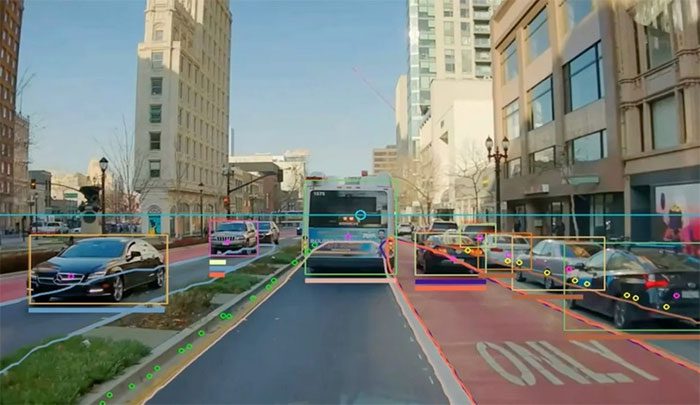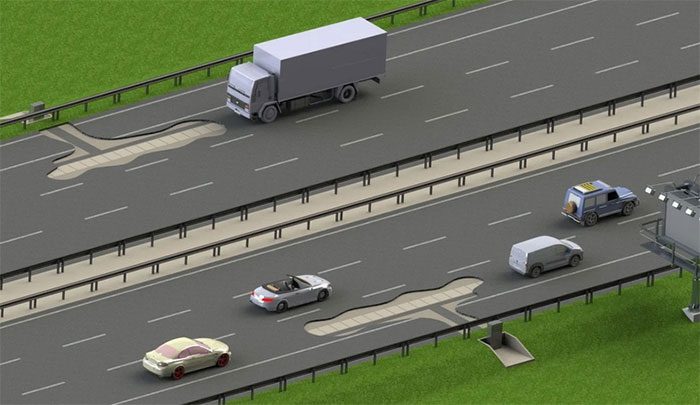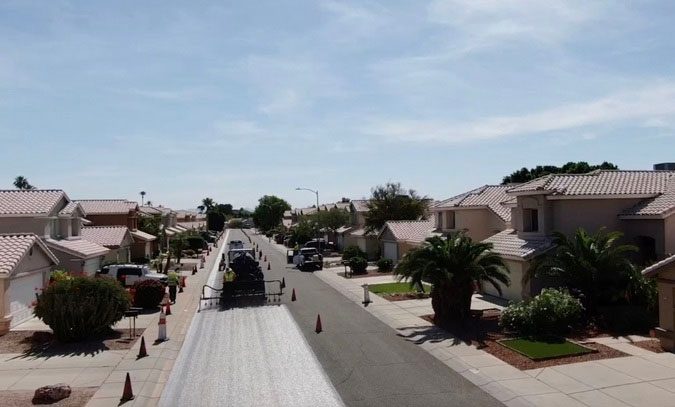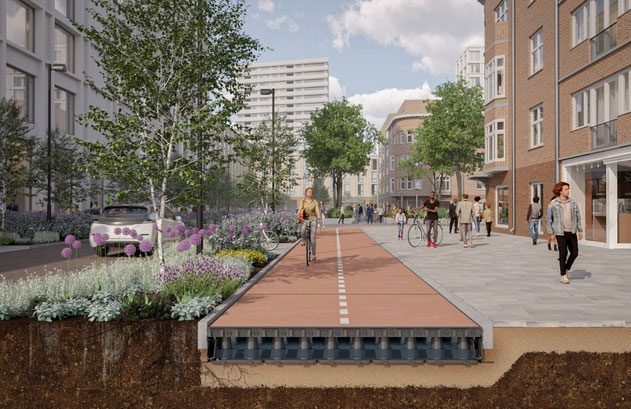By 2050, it is projected that there will be up to 3 billion cars on the road, with most of the world’s population expected to live in urban areas. This increase will lead to a growing demand for smart road infrastructure.
CNN has outlined new technologies that could be implemented in the future for smart roads.
Artificial Intelligence (AI) Infrastructure

Hayden AI software uses sensors to collect data. (Photo: CNN).
AI is increasingly becoming integrated into everyday life. For cities, AI plays a crucial role with real-time technology that helps notify urban safety measures and effectiveness, leveraging vast amounts of data collected from the roads themselves.
Chris Carson, CEO of the U.S.-based company Hayden AI, stated: “We see significant potential for AI to enhance services and the quality of life for people living, working, and playing in cities.” Hayden AI’s AI-based software collects and analyzes metadata from streets. In 2022, the software collaborated with the New York traffic management agency to detect illegal parking in bus lanes.
Mr. Carson added that AI sensors in cities also record everything from vehicle speed to traffic flow. These sensors can analyze and optimize traffic patterns, reducing congestion and accidents in real-time. He concluded: “This technology will ultimately revolutionize how planners and technology leaders build smart cities in the future.”
Meanwhile, Professor Carlo Ratti at the Massachusetts Institute of Technology (MIT) warns that inherent biases and a lack of transparency in AI could lead to counterproductive outcomes for the public. However, he acknowledges that the unprecedented flow of data will provide governments with ways to enhance urban living.
Electric Charging Roads

Simulation of an electric charging road by Magment. (Photo: CNN).
By 2050, half of the cars on the streets are expected to run on electricity. The shift from fuel to electricity means a significant increase in the demand for electric charging infrastructure.
The German startup Magment is one of the pioneers in the field of wireless electric charging, developing energy transmission pads made from recycled materials that are embedded into road surfaces. These lanes would theoretically allow electric vehicles to charge while in motion. Implementing this technology could ease the concerns of electric vehicle drivers regarding long-distance travel.
In addition to charging while driving, the surface pressure of vehicles can also serve as a source of renewable energy. Marco Krieziu, commercial director of the Italian company 20energy, stated that their product named LYBRA “recovers kinetic energy and heat from vehicles moving over its surface and converts it into electricity that can be self-consumed on-site or returned to the grid.” Professor Ratti warns that the convenience of these technologies will come at a high cost.
Heat-Reflective Sidewalks

Heat-reflective sidewalks have been piloted in Phoenix, Arizona. (Photo: CNN).
The future of smart road technology will also need to combat the impacts of climate change, particularly in urban areas that are especially vulnerable. Heat is trapped between buildings and exacerbated by pollution, creating what is known as the urban heat island effect.
The government of Phoenix, Arizona, is developing technology to counter this issue. The Cool Pavement pilot program is one way to address rising temperatures in one of the hottest urban environments in the U.S.
The program involves spraying a water-based polymer coating on sidewalks. Heather Murphy, a representative from the Phoenix Department of Transportation, explains: “It acts like a ‘sunscreen’ for the road by reflecting rather than absorbing heat.”
The city of Phoenix asserts that the project has helped reduce surface temperatures on the sidewalks. However, Mr. Ratti expresses skepticism, suggesting that in sunny cities like Phoenix, reflecting sunlight could dazzle drivers and potentially lead to traffic accidents.
Interlocking Roads

Graphic simulation of interlocking roads. (Photo: CNN).
Interlocking roads are designed to be quickly detached or reconnected like puzzle pieces. This type of road facilitates rapid adaptation by cities to construction demands and emergencies. They have been used on bike and pedestrian paths in Belgium and the Netherlands, produced by the company PlasticRoad.
Unlike traditional roads that direct rainwater into sewers, the recycled plastic blocks from the Dutch company PlasticRoad feature hollow tubes inside to store water or channel it directly into the ground. These tubes can also accommodate pipelines, telephone cables, and electrical wires.


















































